A friend once told me about the time he started finding dry dog food pellets mysteriously appearing in his pockets every time he put on a freshly laundered and dried pair of pants. Dr. Will Turner had a dog, of course, and recognized the pellets as the same kind he offered his dog in a bowl out on the porch every morning. But he wasn’t in the habit of carrying them around in his own pockets, so how did the pellets end up there, day after day? It took him a few days of detective work to figure out what was going on.
A graduate student of urban ecology, and living in one of the burgeoning cities in the American Southwest, Will was conscientious about his environmental impact. So, among other things, he relied on the desert air to dry his laundry rather than using an electric dryer like too many urban dwellers in these energy hungry western cities. A clothesline in the yard, an oddly oft-forgotten bit of technology, is after all lighter both on the city’s energy supply and a grad student’s wallet. Will’s clothesline stretched across their yard, off the porch with the bowl of dog food.
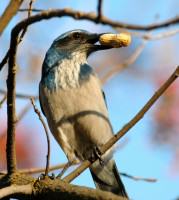 It took a few days of clothesline- and bird-watching to solve the mystery of the pellets in his pockets. Among the various wild creatures who shared Will’s yard was a Scrub Jay, a consummate city slicker of the not-so-wild American West. This bird, like so many of its Corvid cousins in cities all over the world, is a generalist and opportunist with a not too picky appetite for the veritable smorgasbord served up by us, both purposefully through bird feeders and wastefully when we throw out food and organic garbage. Dog and cat food make for delightful morsels for these omnivores, and it didn’t take long for my friend to notice that his Scrub Jay neighbor regularly pilfered the pellets out of his dog’s bowl on the porch.
It took a few days of clothesline- and bird-watching to solve the mystery of the pellets in his pockets. Among the various wild creatures who shared Will’s yard was a Scrub Jay, a consummate city slicker of the not-so-wild American West. This bird, like so many of its Corvid cousins in cities all over the world, is a generalist and opportunist with a not too picky appetite for the veritable smorgasbord served up by us, both purposefully through bird feeders and wastefully when we throw out food and organic garbage. Dog and cat food make for delightful morsels for these omnivores, and it didn’t take long for my friend to notice that his Scrub Jay neighbor regularly pilfered the pellets out of his dog’s bowl on the porch.
Scrub Jays are particularly intelligent, even among Corvids, and have even been shown to be capable of planning for the future. They do this by caching away any extra food tidbits they find, to be eaten later during lean times in the wild. They cache acorns all over their native Oak savannah habitats, for example, digging them up to eat months later during the winter. This ability to cache food, and then to remember the locations of hundreds of cache sites, has evolved as an adaptation to the unpredictable nature of food supplies in their drought-prone semi-arid native country. An experimental study a few years ago found them capable of tracking day-to-day variations in food availability, and caching preferred foods based on what they might (not) get for breakfast the next morning—a form of mental time-travel and planning for the future not seen in too many non-human species. This level of intelligence and opportunistic flexibility of behavior may well be the key to this species’ success in the relatively new cityscapes that have displaced so much of their native habitats.
Will’s Scrub Jay friend had gotten into the habit of not just eating the dog food pellets when hungry, but also hiding them away for potential later use. In the wild, a Scrub Jay caches each acorn carefully, usually in a separate location to minimize the risk of losing them all to potential thieves, parasites, or decay. Seeds may be buried in the ground, or stuck in the crevices of rocks or trees, relatively stable places that are somehow marked down in the Jays’ mental maps for later retrieval. Unsurprisingly, they continue to cache food in the city, finding all kinds of novel hiding places. Such as the pockets of pants hanging on clotheslines conveniently located near bowls of magically refilling dog food pellets. For that was how the pellets were ending up in the pockets of Will’s pants, as he discovered after a few days of yard birdwatching.
Pants, however conveniently they may hang near food sources, can hardly be reliable caching locations. Yet this bird continued to stuff the pellets into the pants, as if driven by sheer habit, even though the cache kept disappearing along with the pants on a daily basis. You can find Scrub Jays use a similarly bewildering variety of odd, unstable locations to cache foods in the suburban jungle. Putting extra food away for a non-rainy day is evidently a habit that has become hardwired into their behavior. Never mind if the cache location itself is ephemeral and unreliable. After all, there is enough food available to these birds in the city that they don’t really depend on their caches so much any more. Caching, then, is rather like how we often put extra food away in the fridge after a big meal, only to throw it away days or weeks later. Who wants to eat leftovers when fresh meals are readily available?
I remember this story, and retell it here, because it illustrates one of the key features of urban habitats for many species: they are relatively predictable habitats offering a reliably steady supply of food. Yes, we build cities by ripping out and paving over more natural habitats, destroying most of the natural food sources for the native creatures. Yes, we shatter the landscape into too many fragments in a patchwork of green/brown/grey which can be transformed over and over at our whims. Yet, amid this increasingly heterogeneous, dynamically patchy space, we do seem to reduce variability in time, establishing new rhythms of renewal of food and water in the urban ecosystems, often to suit our own daily cycles. Any other species that can survive on our excess food subsidies, and find a way to fit into the urban landscape matrix, is free to come along for the ride.
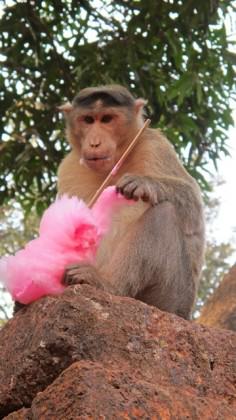 So what is the ecological rhythm of life in the city, for species that share our urban spaces with us? Dr. Ajith Kumar, one of my professors at the Wildlife Institute of India, while teaching us the methods of documenting and measuring primate behavior in the wild, made the observation that the daily time-budget and diet of monkeys—Bonnet Macaques—in Chennai (and other South Indian cities) consist of hanging around people’s kitchens and eating idli (steamed rice-and-lentil cakes) for breakfast. Just like the human inhabitants of those cities. Nearby, House Crows watch people keenly and dart into kitchens through open windows in sudden snack attacks that startle the human inhabitants but seldom draw more than a frustrated yell or an expertly dodged broom thrown in retaliation. Like their Scrub Jay cousins in California, and other corvids around the world, these Chennai residents have figured out when and where to obtain food reliably in the urban maze.
So what is the ecological rhythm of life in the city, for species that share our urban spaces with us? Dr. Ajith Kumar, one of my professors at the Wildlife Institute of India, while teaching us the methods of documenting and measuring primate behavior in the wild, made the observation that the daily time-budget and diet of monkeys—Bonnet Macaques—in Chennai (and other South Indian cities) consist of hanging around people’s kitchens and eating idli (steamed rice-and-lentil cakes) for breakfast. Just like the human inhabitants of those cities. Nearby, House Crows watch people keenly and dart into kitchens through open windows in sudden snack attacks that startle the human inhabitants but seldom draw more than a frustrated yell or an expertly dodged broom thrown in retaliation. Like their Scrub Jay cousins in California, and other corvids around the world, these Chennai residents have figured out when and where to obtain food reliably in the urban maze.
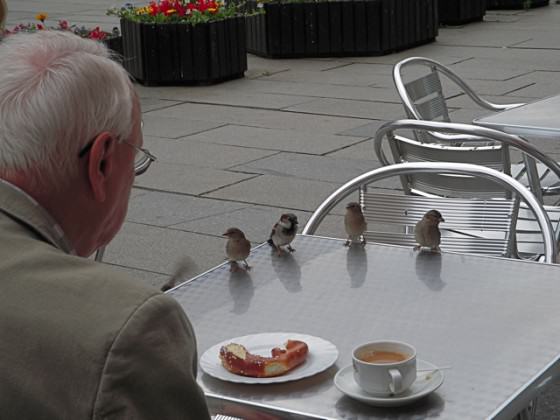 House Sparrows in many a quaint European city start their mornings—and likely spend the rest of the day too—hanging around the outdoor tables of streetside cafes, waiting for crumbs of croissant or baguette (maybe bagel for their cousins who’ve settled across the Atlantic) dropped accidentally or on purpose by the patrons. Meanwhile in Tempe. Arizona, in the xeriscaped backyard of Dr. Dave Pearson, an entomologist at Arizona State University, large flocks of birds show up every dawn like clockwork. These mixed flocks include non-native city slickers like the House Sparrow and Inca Dove alongside Sonoran Desert natives like Abert’s Towhee, House Finch, White-Winged Dove, Cactus Wren, and Curve-billed Thrasher. And they all wait patiently (but not for long) every morning for Dave to bring out bags of birdseed to replenish the feeding stations at designated spots throughout his yard.
House Sparrows in many a quaint European city start their mornings—and likely spend the rest of the day too—hanging around the outdoor tables of streetside cafes, waiting for crumbs of croissant or baguette (maybe bagel for their cousins who’ve settled across the Atlantic) dropped accidentally or on purpose by the patrons. Meanwhile in Tempe. Arizona, in the xeriscaped backyard of Dr. Dave Pearson, an entomologist at Arizona State University, large flocks of birds show up every dawn like clockwork. These mixed flocks include non-native city slickers like the House Sparrow and Inca Dove alongside Sonoran Desert natives like Abert’s Towhee, House Finch, White-Winged Dove, Cactus Wren, and Curve-billed Thrasher. And they all wait patiently (but not for long) every morning for Dave to bring out bags of birdseed to replenish the feeding stations at designated spots throughout his yard.
Sea gulls fly deep inland from the California coast during the winter to survive on urban garbage dumps and roost on the wide lawns of local schoolyards and parks. Alongside migratory and resident geese who honk at passersby, especially in the public parks, aggressively begging for food handouts not unlike the squirrels nearby or the more remote monkeys of southern India. Raccoons and Skunks come out at dusk, patrolling back alleys especially on nights before garbage collection days. Bears too, come rooting through garbage cans, and in some places have found that food supply steady enough through the winters to allow them to give up hibernating altogether. Its a year round party in the city if you know where and how to find it, and aren’t too picky about what you eat.
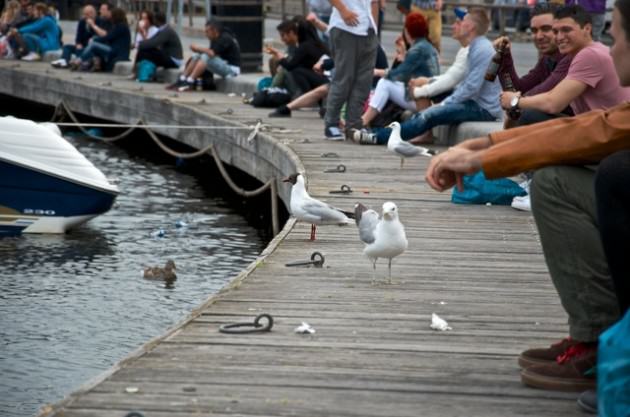 Examine the city from an ecological perspective, as an ecosystem built for humans, and a few features about the rhythm of city life stand out. We built cities to escape the vagaries of nature, its seasonal cycles and annual and decadal fluctuations which make life challenging. In the city, we shelter from extremes of climatic cycles, insulating ourselves in increasingly climate-controlled indoor environments. Outdoors, cities even create their own local climate bubbles, heat islands which mitigate the northern winters and herald a globally warmed up future. We have now altered the flow of food and water across the planet, funneling much of the products of plant/animal/human labor into cities that blanket the lands as busy hubs in an ever tightening web of highways and railways. Our network of cities in this globalized world is thus the culmination of our millenia-long quest to free ourselves from the contraints of nature’s cycles. So we can now eat mangos and cherries in the middle of a northern winter, and never seem to be too far away from an all-you-can-eat buffet of foods fast and slow. In harvesting so much of the Earth’s primary productivity for ourselves, we have succeeded in raising and flattening out the fluctuations in natural cycles of nutrient flows. Where our ancestors (and some increasingly small indigenous communities even now) flowed across the landscape keeping a close eye on the flushing of leaves, blooming of flowers, ripening of fruits, and the local or long-distance migrations of fish and bird and mammal, worrying about where the next meal was coming from, we now mostly worry about when the bakery around the corner opens in the morning so we can get in line before the fresh bagels are sold out. The ebbs and flows in our food supplies have been replaced by a more steady stream, and the rhythm of food availability now pulses to a new urban beat, set more by the convenience of our social arrangements rather than the rotations of the planet or its cycling around the sun.
Examine the city from an ecological perspective, as an ecosystem built for humans, and a few features about the rhythm of city life stand out. We built cities to escape the vagaries of nature, its seasonal cycles and annual and decadal fluctuations which make life challenging. In the city, we shelter from extremes of climatic cycles, insulating ourselves in increasingly climate-controlled indoor environments. Outdoors, cities even create their own local climate bubbles, heat islands which mitigate the northern winters and herald a globally warmed up future. We have now altered the flow of food and water across the planet, funneling much of the products of plant/animal/human labor into cities that blanket the lands as busy hubs in an ever tightening web of highways and railways. Our network of cities in this globalized world is thus the culmination of our millenia-long quest to free ourselves from the contraints of nature’s cycles. So we can now eat mangos and cherries in the middle of a northern winter, and never seem to be too far away from an all-you-can-eat buffet of foods fast and slow. In harvesting so much of the Earth’s primary productivity for ourselves, we have succeeded in raising and flattening out the fluctuations in natural cycles of nutrient flows. Where our ancestors (and some increasingly small indigenous communities even now) flowed across the landscape keeping a close eye on the flushing of leaves, blooming of flowers, ripening of fruits, and the local or long-distance migrations of fish and bird and mammal, worrying about where the next meal was coming from, we now mostly worry about when the bakery around the corner opens in the morning so we can get in line before the fresh bagels are sold out. The ebbs and flows in our food supplies have been replaced by a more steady stream, and the rhythm of food availability now pulses to a new urban beat, set more by the convenience of our social arrangements rather than the rotations of the planet or its cycling around the sun.
While we bask in this triumph… yes, I know, it is hardly an unmitigated triumph given the litany of environmental damage in its wake as often documented on this very blog; and I know that this steady flow of food and resources is not equally available to all humans even in the cities let alone outside; but, despite those persistent knotty problems, we have nevertheless triumphed over nature’s vagaries in large parts, uneven and ephemeral as our triumph may turn out to be. So… while we bask in this triumph, it shouldn’t surprise us to notice that many other species have also been watching our success and have been riding our tailcoats into the new Anthropocene Earth. It shouldn’t surprise us that the list of species hopping on to our urban gravy train is still growing, as more species respond to the changes wrought by global urbanization, and succumb to the evolutionary challenge of adapt or go extinct.
In the wild, successful species must evolve finely-tuned physiologies that track the regular beat of the seasons and the pulses of tropical storms and the less regular longer rhythm of El Niño cycles which shape the availability of water and food. So the wildflowers and cactuses of the Sonoran Desert or the Namib wait for the unpredictable “monsoon” winds to bring rain which triggers quite an immediate dance of life that ripples quickly across these desert ecosystems. And so the bears and the frogs hibernate through temperate winters while herds of large mammals (used to, still try to) flow across Alaska and Africa, and the birds fly across oceans and mountains, chasing seasonal peaks of sunshine and rain captured by plants and turned into food cascading through complex food webs. Once we began to figure out these nutrient flows, however, and learned to capture and control and divert the planet’s primary productivity to ourselves, we inevitably drove many other species, our competitors and predators, to extinction locally and globally. In the process, we also changed the pressures of natural selection acting on these species. Those species that didn’t go extinct began to evolve adaptations allowing them to fall through the cracks into our own habitats which we don’t really control as well as we think we do. Extinction, while inevitable, is only one of two choices every species must face in life. The other option is to adapt, and many species have and are adapting to the rhythms of urban life.
Evolutionary consequences of our action are, if you think about it, quite inevitable. Set up feeders in your suburban yards to feed the poor birds starving through an English winter, and don’t be surprised if some of those birds change their migratory behavior and begin to split into new species. Such is the tale of the European Blackcap Warblers, which evolved to exploit the continent’s spring flush of insects and fruits to raise broods in the summer before heading south to warmer climes in the winter. When bird fanciers in England and Ireland started setting up bird-feeders, a few of the Blackcaps found they didn’t need to undertake the arduous risky migration towards Africa after all; much easier to hang out in the British gardens where the bipedal primates with the funny hats keep up an endless supply of bird food. That way, not only does a warbler have a better chance of surviving over-winter, it can also be among the first to fly back to its nearby German breeding ground and be in prime position to make the most of the continental summer. The longer-distance migrants arrive later, and must mate among themselves. Thus a few individuals who perhaps flew the wrong way, and who might in the past have simply died in the winter, have now grown into a distinct population thanks to the predictable generosity of human bird feeders. Since migratory behavior, including direction of migration, and choice of mating partners, are all part of the genetic legacy passed from parent to offspring in these birds, the European Blackcaps are now well on their way to splitting up into two distinct species: the German traditionalists who continue to migrate south, to Mediterranean villas or African woodlands for the winter, versus modern urbanists who simply hop across the channel into English and Irish gardens. The new rhythms we have introduced into the cycles of nature sure can alter the age-old evolutionary dance.
Ask humans about the rhythm of city life, however, and they will tell you it is not the same everywhere. New Yorkers, Mumbaikars, Londoners, and Edokkos (or Tokyokkos) have a faster cadence to their walk to the subway stations, and get impatient if their coffee is not served fairly quickly, while Kolkatans and Parisians prefer to linger in their coffee houses, and the lazy beach bums of Los Angeles and Rio de Janeiro lounge in the sun and sand. These rhythms turn out to be more than mere cultural stereotypes. My Fresno State colleague, the psychologist Dr. Bob Levine, who studied the geography of psychological time across human cultures, measured how fast people walk in different cities and found that walking speed correlates quite well with these cultural stereotypes. More recently, physicists Geoffrey West and Luis Bettencourt of the Santa Fe Institute took a big data approach to document the social, economic, cultural and energy metabolism of cities worldwide, and also found patterns confirming the cultural stereotypes: there are indeed fast cities and slow cities, their different rhythms seemingly driven as much by population density and economic activity as by cultural practices and preferences. While many cities aspire to the faster trajectories of the more conventionally successful metropolises, others, like in Italy, are banding together in a new Slow Cities campaign to augment the Slow Food movement.
What does this cultural variation in the rhythms of city life, urban metabolism, mean for other species that are adapting to our habitats? We are only just beginning to appreciate, measure, and understand the evolutionary adaptations of the slowly growing list of species that constitute our urban wildlife. As I described above, the overarching trend of steadying food and water supplies to make them predictably available year round is allowing many species to adapt to our perennial smorsgasbord. Yet, in the finer details, these adaptations must also be tuned to the culturally driven rhythms of who puts out food for birds or monkeys when and where, how and how often garbage is collected and disposed off in different cities, and whether people in desert cities can stop growing lawns to plant more water wise gardens.
Having passed a rubicon recently by having a majority of humans living in cities, are we now also on the threshold of another profound planetary change where human culture sets the dominant beat defining the natural rhythms of food availability for other creatures? Or have we already passed that threshold too, obliviously? In the recent alarming declines of House Sparrows in Eurasia, we are already seeing the consequences of rapid technological and cultural changes, which can destabilize even our most seasoned companion species. In drawing other species into the vortex of urbanization with our predictable food subsidies, are we setting up more of them for longer-term evolutionary failures? Or can we learn quickly from their successful adaptations and figure out how to enjoy the benefits of a culturally diverse city life which also includes a fair bit of biological diversity?
The answers to these questions lie in our own cultural adaptability and flexibility. We have the ability to develop this new understanding of the evolution of species in urban environments, and harness it towards improving the quality of life for all species concerned. We also have the capacity to carry on blindly with ingrained cultural habits, much like the Scrub Jay stuffing dog food into pants pockets without realizing the futility of that caching effort. The answers to these questions, and how quickly we find them, could be keys to how the music of urbanization unfolds across our planet, into a life-sustaining harmony or a cacophonous crescendo that either slows down or accelerates the pace of the sixth mega-extinction we are now wreaking in the history of life on Earth.
Madhusudan Katti
Fresno
About the Writer:
Madhusudan Katti
Madhusudan is an evolutionary ecologist who discovered birds as an undergrad after growing up a nature-oblivious urban kid near Bombay, went chasing after vanishing wildernesses in the Himalaya and Western Ghats as a graduate student, and returned to study cities grown up as a reconciliation ecologist.

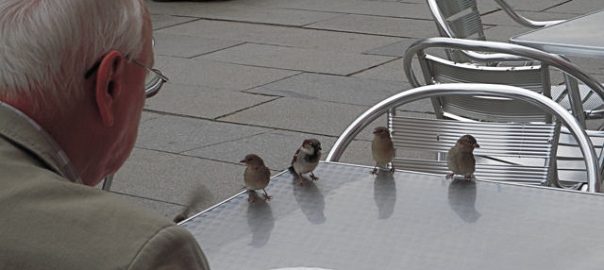


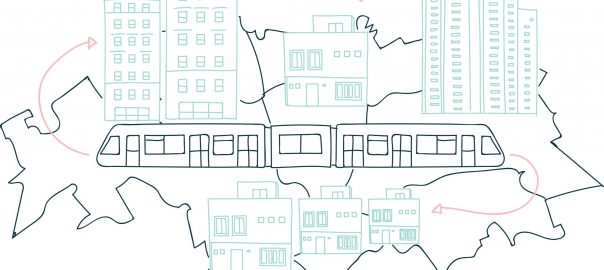
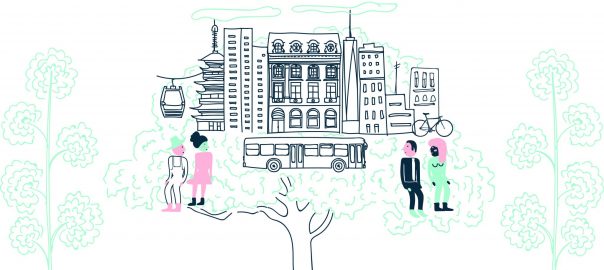
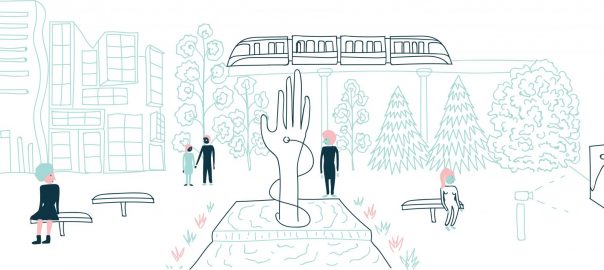
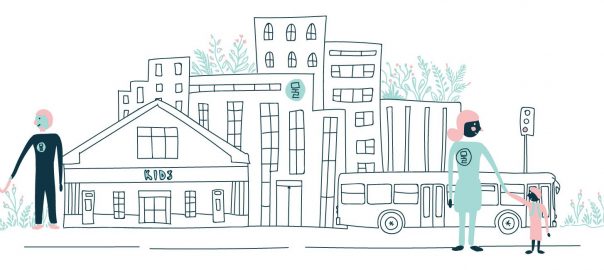
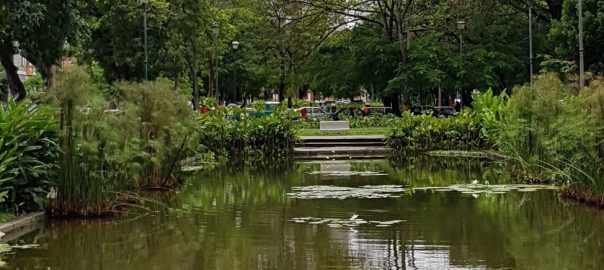
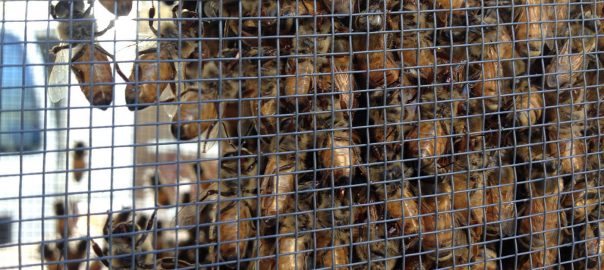
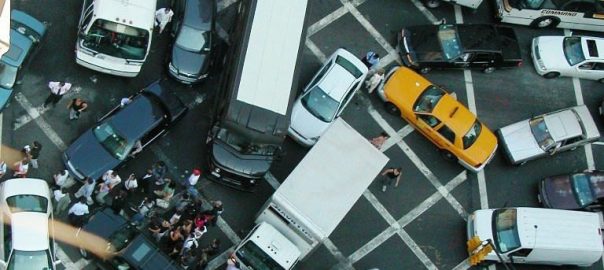
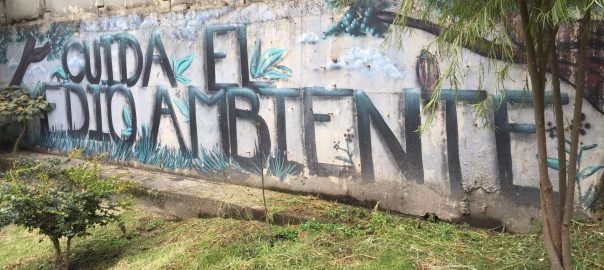
Perhaps the things that animals do are not all instinct, hardwired or utilitarian.
Perhaps the scrub jay is simply fascinated by the mysterious appearance of the pellets in the bowl and their equally mysterious subsequent “disappearance” when placed into the pockets of the drying clothes. Perhaps he hopes to figure these mysteries out”, or believes them to be some sort of “offering”. 🙂
I found the fact that birds would/could use human clothing along with anything else in its habitat, very interesting because I have never heard of something like this happening. The differences in eating like sea gulls who eat from garbage dumps in California, then the geese who beg fro food and just how the different every animal diet is, is fascinating. Land animals like raccoon’s and squirrels just eat from what ever is around mainly in bigger populations. The questions that I would have is- What makes the seal gulls be able to eat garbage with killing them but other animal can die? Also does the type of diet each animal is reading has, effect the way each animal goes about gathering its food?